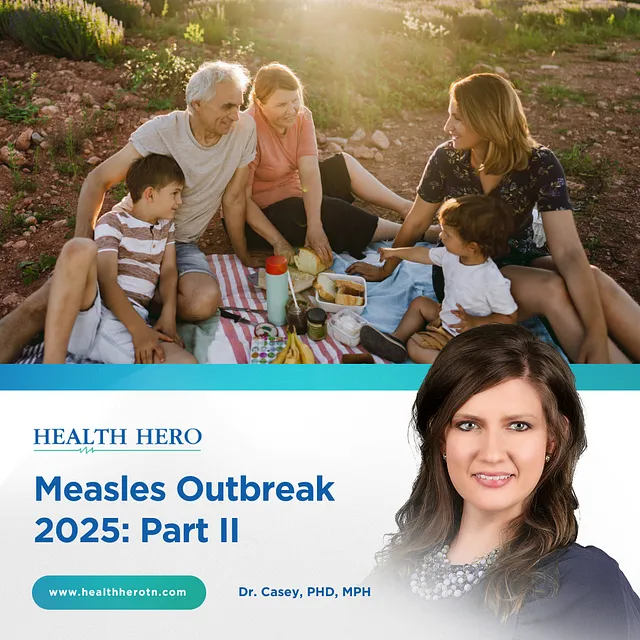October 28th marks the 110th anniversary of Dr. Jonas Salk’s birth. Jonas Edward Salk was an American virologist, physician, and medical researcher who became known as a “miracle worker” after developing the first safe and effective vaccine for polio in 1955. This vaccine, known as inactivated poliovirus vaccine (IPV), contained killed virus. Since its development, polio vaccination has helped to eliminate wild poliovirus in the United States.
Polio: Before the vaccine
Before the development of Salk’s vaccine, polio was a highly feared disease. One reason it caused so much concern is because it was–and still is–so highly contagious. It paralyzed and killed thousands of people every year. There were frequent polio epidemics, making it one of the most dreaded diseases in the world. Little was known about the virus, and attempted treatments (such as lumbar punctures) were rarely successful. Children infected with polio often survived by depending on an iron lung to help them breathe because the virus can paralyze the muscles used for breathing. Even for those who recovered from the initial polio infection, 25 to 40 people out of 100 were affected by post-polio syndrome which caused many painful, debilitating symptoms. Polio killed millions of people worldwide, particularly during the 1940s and 1950s, before the vaccine was developed. It was a leading cause of death and paralysis internationally. At its peak, polio killed close to half a million people every year, killing thousands of people at a time in individual outbreaks in a single city in the U.S.
Developing the vaccine
Widespread fear of polio led to many researchers working toward a vaccine in the mid-1900s. Different methods were used, but Salk remained focused on developing a vaccine using a “killed” virus (rather than using a vaccine containing live poliovirus). Although this went against common beliefs in the scientific community then, Salk believed the killed virus vaccine could immunize without the risk of infecting the patient. In the early 1950s, Salk found success with his vaccine in laboratory testing. He then tested the vaccine on himself, his family, and a small group of volunteers. After that continued success, he launched an international vaccine trial in 1954 in the United States, Canada, and Finland, testing the vaccine on 1.6 million child volunteers, ages 6–9 years old, who had not had polio, known as the “polio pioneers.” The patients in these trials developed anti-polio antibodies and did not experience adverse reactions to the vaccine. In April 1955, the vaccine was announced as safe and effective and became immediately available for widespread use.
How the vaccine changed the world
After Salk’s inactivated poliovirus vaccine (IPV) was licensed, it was met with overwhelming acceptance by the public, who had suffered from so many deadly polio outbreaks and lived in constant fear. Parents, especially, were eager to vaccinate their children as quickly as possible. Programs were implemented to vaccinate children in school, if desired, to ensure as many children as possible had access to this life-saving vaccine. Programs offering vaccines at schools were extremely successful and continue to be a way to provide equitable preventive healthcare access, particularly for children in rural and medically underserved areas today. Americans were so relieved by and enthusiastic about the polio vaccine that mandatory vaccination policies were never needed. After vaccination became available in April 1955, polio cases in the United States dropped from over 45,000 a year in the 1950s to 910 in 1962. Salk chose not to patent the vaccine or to seek profit from it. His focus and goal was for the vaccine to be as widely distributed as possible, thus Salk never earned any money from his world-changing discovery. Other polio vaccines were developed later, but Salk will always be hailed as developing and implementing the first safe and effective polio vaccine.
The legacy of Salk and the polio vaccine
There have been no cases of wild poliovirus in the United States since 1979, with the disease declared eliminated from the U.S. By 1994, polio was eliminated from the Americas, and by 2000 the disease was eliminated from the Western Pacific. In the 21st century, cases have decreased by over 99% worldwide in under twenty years. However, wild poliovirus cannot be classified as “eradicated” from the world because the virus remains in Afghanistan and Pakistan. This poses a threat that individuals could contract polio in those countries, travel to another country, and an outbreak could occur. This is why it is still important for individuals in all countries to receive the polio vaccination — to protect against accidental infection or, worse, an accidental outbreak. I’ll give a prime example of this in just a minute.
The Global Polio Eradication Initiative (GPEI) is a group of partners worldwide focused on permanently stopping the spread of wild poliovirus and outbreaks of poliovirus variants. Global eradication of this disease is possible! And it was made possible by vaccines. This is another example (of many) showing how diseases, health, and prevention are connected from all parts of the world. It is so important to stay mindful of health issues in the rest of the world and to be as protected as we can be through whatever preventive measures are available to us. A person might never leave the United States or even their home state, but we live in a world without looking for diseases; sometimes, they come to us. The “prime example” I mentioned above occurred in August 2022, when there was a confirmed case of paralytic polio in an unvaccinated young adult without a relevant travel history that would have exposed them to the virus. The virus came to them through an individual who had traveled, been exposed to it, and acted as a carrier back to the community. Because the infected person was not vaccinated against polio, they were vulnerable to the disease. This is frightening and a perfect example of why we must keep ourselves protected even if we don’t think we are at a direct risk–because we never know. Just one case of polio in the U.S. represents an official public health emergency because it suggests that poliovirus could be circulating in the community. It is difficult to be sure at first glance because most poliovirus infections do not show symptoms. Below, I will link to an article about this event, the public health measures, investigation, tracing, costs, and other details associated with finding just this one case of polio.
Other Questions?
Please message my page with questions, comments, musings, or information to share. I am always learning, and it is one of the best parts of my work. I want to leave you with some powerful words from Dr. Salk:
“Our greatest responsibility is to be good ancestors.” –Jonas Salk
Be Well; Be Kind,
Dr. Casey


